Six years ago, I started working on a large Japanese black pine that had been developed as landscape material.
Japanese black pine – 2012
Over the years I reduced the tree to a single cascading branch (for the full story, see links to parts 1-4 below).
Black pine – December 2017
Several years ago, the tree suffered some root loss and dieback. I wasn’t sure if it was going to make it, but it came out well last year and was ready for wiring and decandling this past spring.
This fall, I decided to thin some of the excess needles and repot the tree.
After thinning needles
I was curious to see how the roots were doing. It had been a couple of years since the tree was repotted and at last look, there were few signs of life.
I was happy to find that there were plenty of roots emerging from the half of the trunk that supported the sole branch.
New roots
I was surprised, however, to see how much old soil was left in the rootball. I’d removed as much as possible during the previous two repottings and removed the remainder this time around.
Plenty of roots on this side
Few roots on the other side
It took a little engineering to secure the tree in the pot, but a few chopsticks did a good job holding the tree tight.
Chopsticks for support
As you can see in the photo above, I used fairly large soil down below before adding a thin layer of small soil on top.
After repotting
I ignored, for the time being, the large jin. Am not yet sure what the plan is for it, but it’s not a given that it’ll stick around. If it’s reduced, the final tree will be closer to the following in size.
Without the jin – 15″ tall from the top branch to the lowest branch
Of course, the other side could also work.
View of the back – an option for a future front?
At this point, I’m most interested in maintaining the tree’s health. I plan to feed the tree well in spring but I’m not sure about decandling. I may wait another year for that.
Missed the previous articles in this series? Here they are:
Part 1 / Part 2 / Part 3 / Part 4
Subscribe to Bonsai Tonight
New Posts Delivered Every Tuesday and Friday

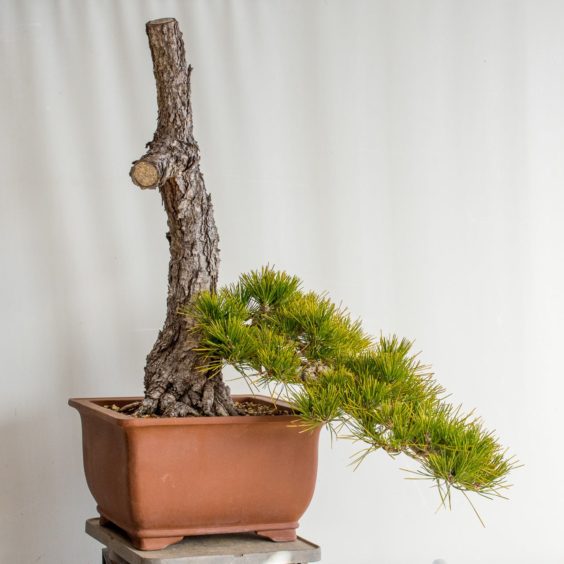
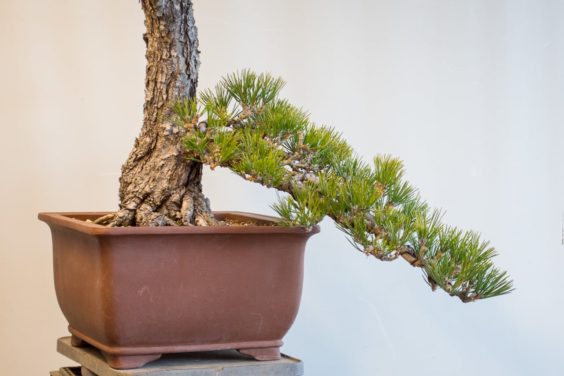
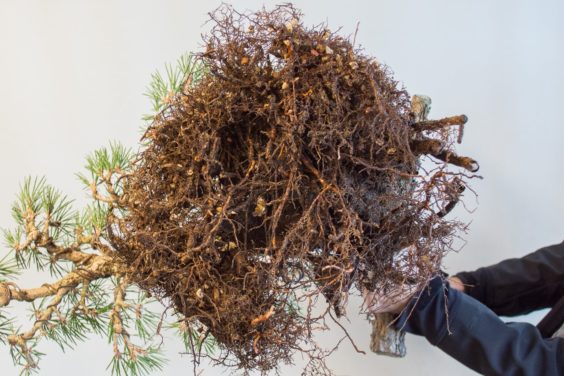
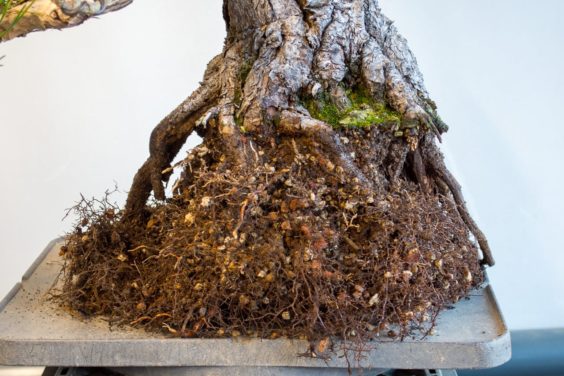
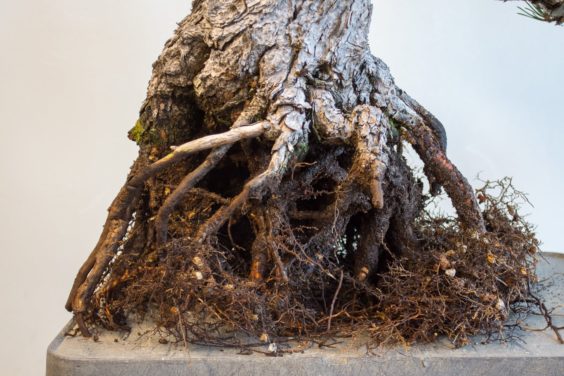
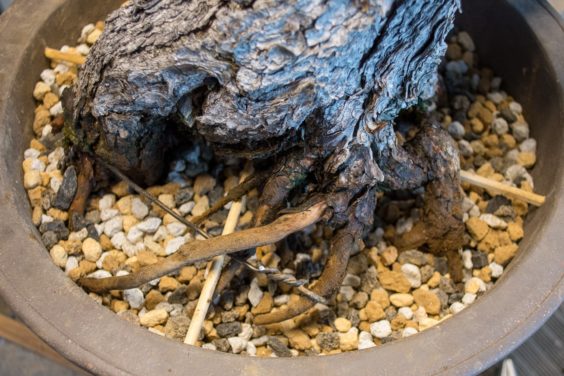
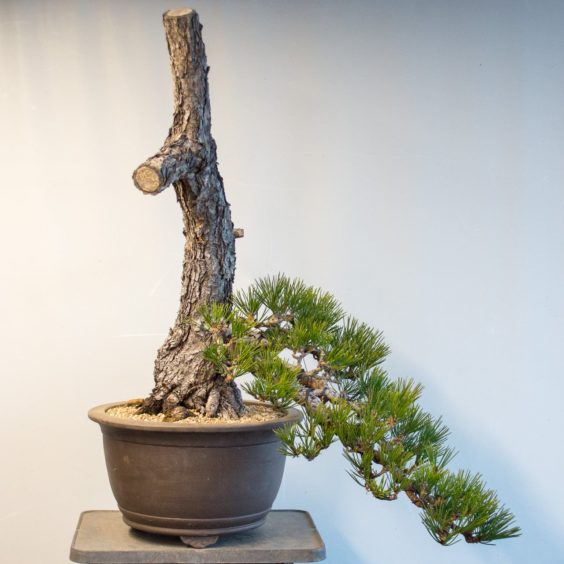
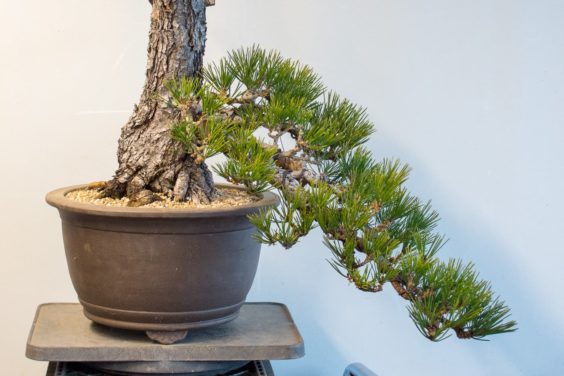
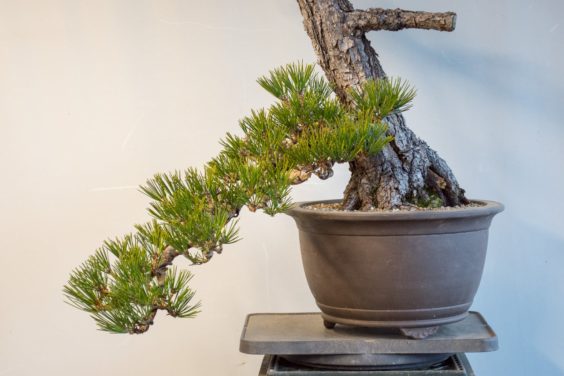
Vince Nguyen says
Great writeup as always, Jonas. One question, do you know the variety of this black pine? I have one just like it I think its mikawa but not sure.
Thanks
Jonas Dupuich says
Thanks Vince! No idea which region this pine traces its genetics back to. It doesn’t look like the Mikawa I’m used to seeing, but it’s hard to say where and how it got its start.
Nacho Pello says
Amazing, thanks for sharing all your work, is very educational and entertaining!
Zack Clayton says
I like the root buttress better on the branch descending to the left better. It also seems to have a more interesting interplay with the trunk on that side.